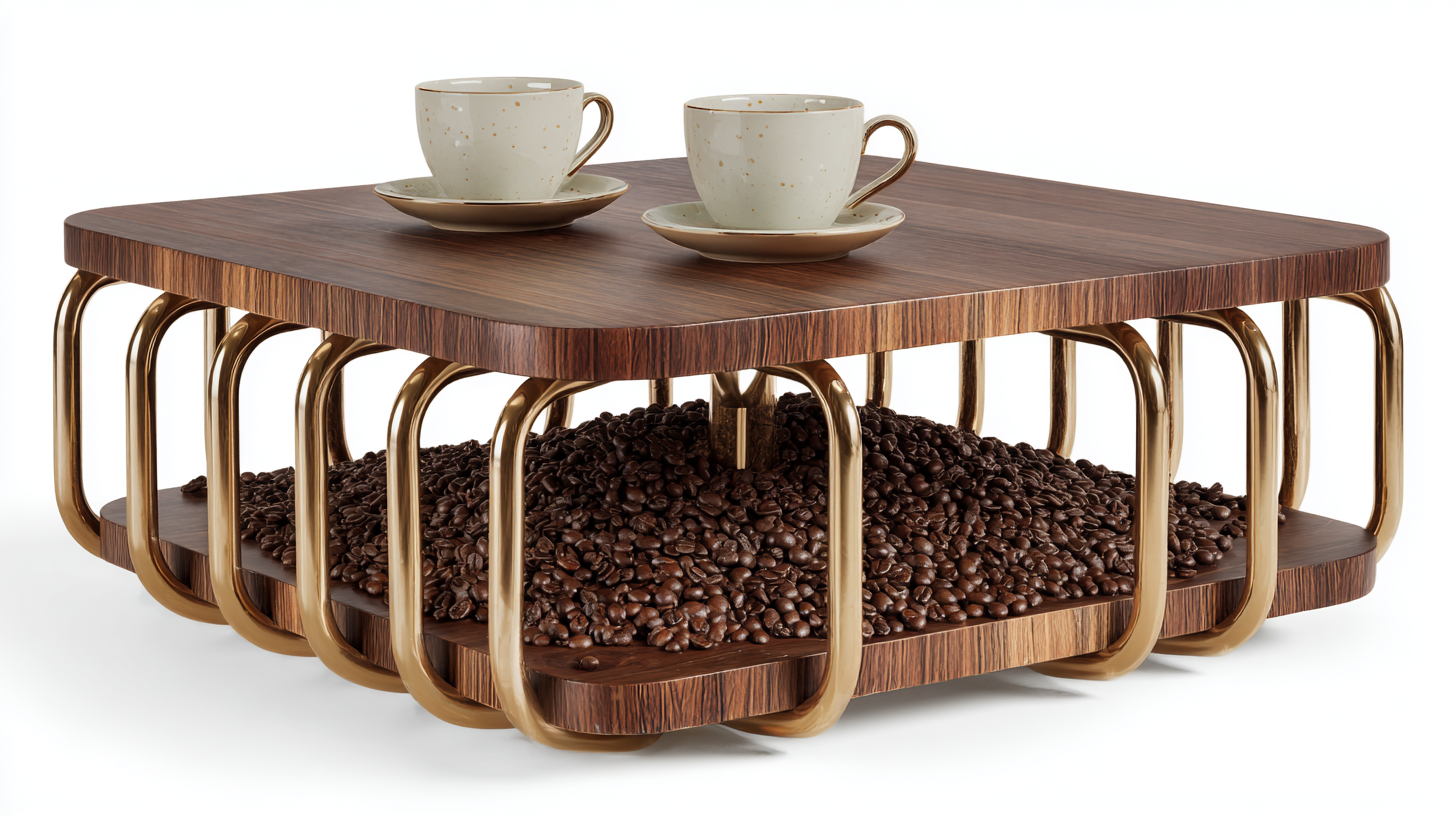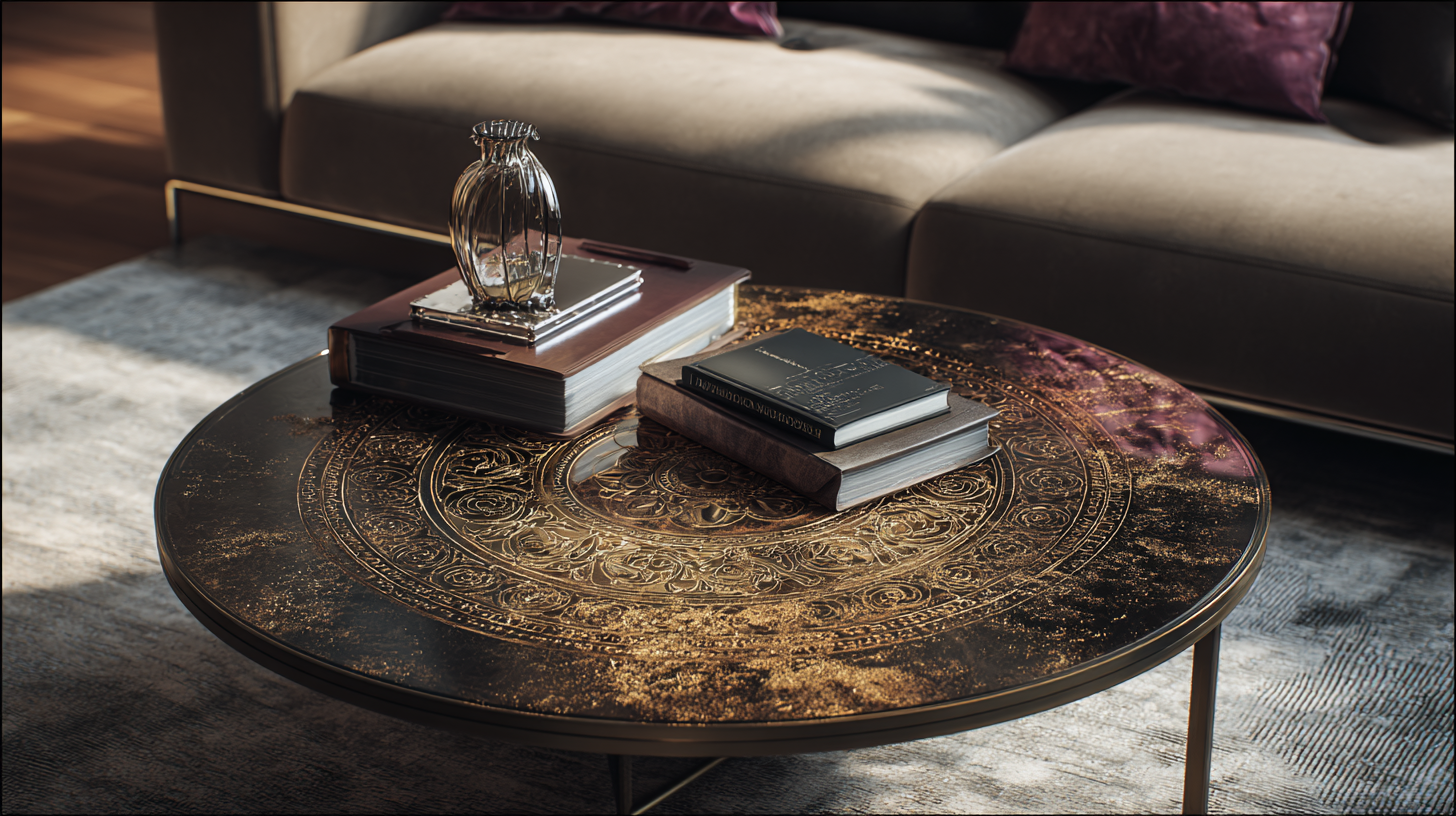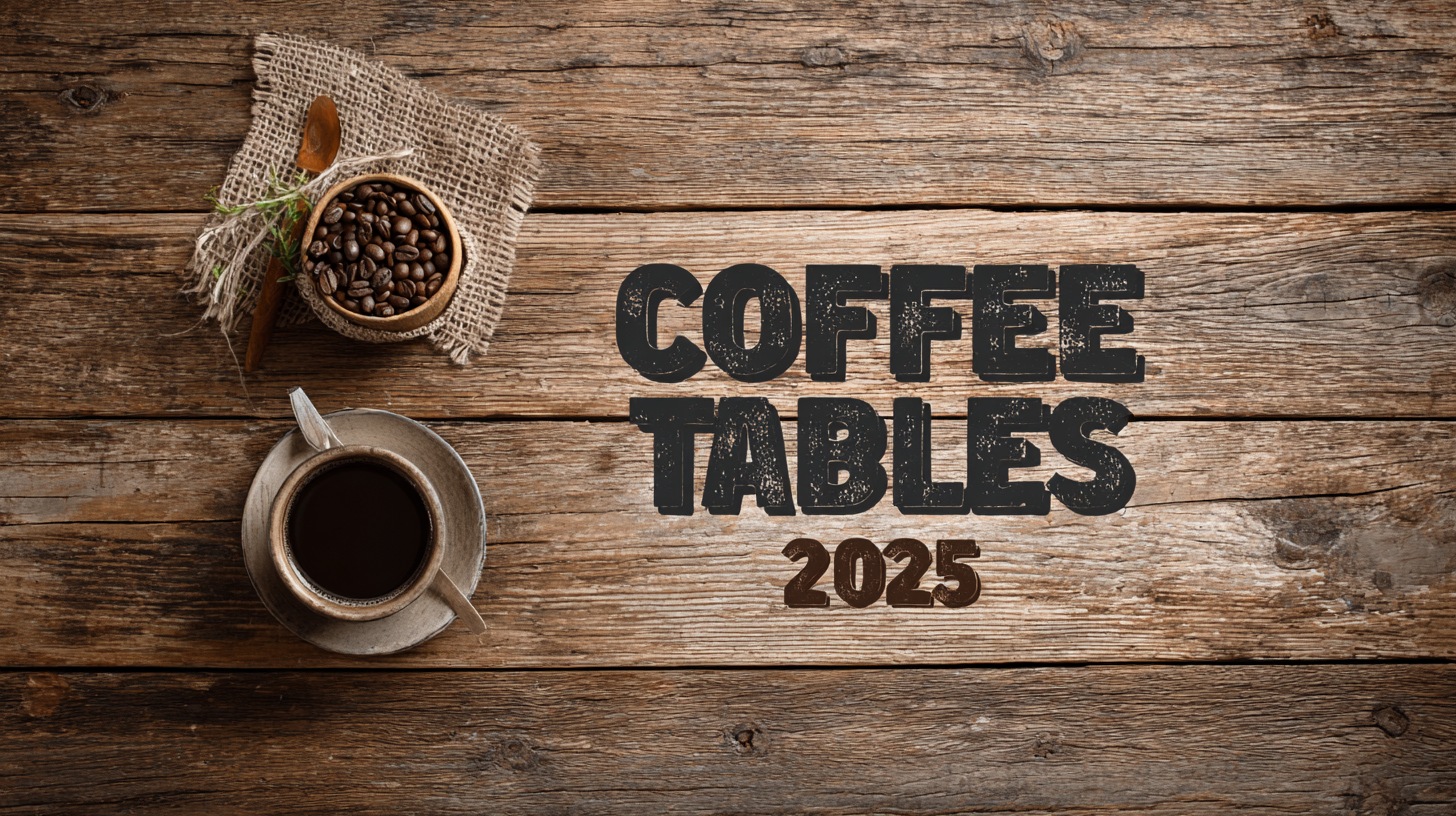Navigating the Best Coffee Tables Trends in 2025 Unveiling Market Data and Consumer Preferences
As we step into 2025, the coffee tables market is poised for significant transformation, driven by shifting consumer preferences and innovative design trends. According to a recent market analysis by Grand View Research, the global coffee tables market is projected to reach USD 5.7 billion by 2027, growing at a CAGR of 4.5%. This growth is largely attributed to the increasing demand for multifunctional furniture that caters to the evolving lifestyle of consumers, particularly in urban settings. Additionally, a report from Statista highlights that over 70% of consumers now prioritize sustainability when selecting home furnishings, pushing manufacturers to adapt to eco-friendly practices. The rising influence of Chinese manufacturing capabilities further enhances the market dynamics, where quality and affordability converge, inviting a broader audience to explore contemporary and traditional designs.

In this blog, we will delve into the latest trends shaping coffee tables in 2025, exploring how market data and consumer insights guide both aesthetic choices and functionality.
Emerging Materials: Sustainable Choices in Coffee Table Design for 2025
As we dive into the coffee table trends of 2025, sustainability emerges as a guiding principle in design. Consumers are becoming increasingly conscious of their environmental impact, prompting designers to explore eco-friendly materials. A recent market analysis from the Sustainable Furniture Association indicates that over 70% of consumers are willing to pay a premium for sustainably sourced furniture. This shift is reflected in the rising popularity of reclaimed wood, recycled metals, and even bioplastics. These materials not only reduce waste but also add unique character to each piece, making them highly desirable for the modern home.
**Tip 1:** When choosing a coffee table, look for certifications such as FSC (Forest Stewardship Council) to ensure that your wood is sourced sustainably.
The trend towards sustainable materials is also paired with innovative designs that blur the lines between form and function. According to a report by the Global Design Council, coffee tables incorporating multifunctional elements, like built-in storage or convertible features, have surged in demand by 45% over the last year. These designs not only maximize space but encourage consumers to invest in pieces that serve multiple purposes without sacrificing aesthetics.
**Tip 2:** Consider a coffee table with integrated storage to declutter your living area while maintaining a sleek look.
Navigating Coffee Table Trends in 2025
Key Aesthetic Trends: Colors and Finishes That Define Modern Living Spaces
In 2025, the world of interior design is set to embrace bold colors and luxurious finishes that resonate with the modern aesthetic of living spaces. As consumers increasingly seek dynamic environments, color trends will play a pivotal role in shaping their homes. Rich hues like deep reds and grounding neutrals are making a powerful impact, creating a cozy yet vibrant atmosphere that encourages comfort and connection. These colors not only energize a space but also reflect a growing desire for personalization and warmth in home layouts.
Complementing these rich color palettes, finishes are also evolving, with a focus on textures that enhance the overall aesthetic experience. From sleek, high-gloss surfaces to warm, natural wood grains, the finishes selected for furniture pieces like coffee tables are crucial in conveying a harmonious balance in modern decor. As designers explore innovative materials and effects, the interplay between color and finish will continue to define the serene yet striking environments that characterize contemporary homes. With wellness and joy at the forefront, the design trends of 2025 are set to create spaces that truly feel like sanctuaries.
Functional Innovation: Smart Coffee Tables and Their Impact on Home Living
In 2025, smart coffee tables are redefining the way we interact with our living spaces. These functional innovations combine technology with design, catering to the needs of modern homeowners who value both aesthetics and usability. With built-in wireless charging, integrated speakers, and even touchscreen interfaces, these tables are more than just furniture—they are multifunctional hubs that enhance everyday living. As remote work and virtual interactions become increasingly commonplace, smart coffee tables provide the perfect blend of style and practicality, allowing users to transition seamlessly from leisure to productivity.
Moreover, consumer preferences are shifting towards multifunctional furniture that maximizes space and utility. As urban living continues to grow, the trend is moving away from traditional, single-purpose pieces towards items that serve various roles. Smart coffee tables often feature storage solutions, adjustable heights, and connectivity to smart home systems, ensuring that they meet the diverse needs of their owners. This innovation not only optimizes living environments but also promotes a more efficient and enjoyable lifestyle, making smart coffee tables a central figure in contemporary home design.

Consumer Insights: How Preferences Are Shaping the Coffee Table Market
As we delve into the coffee table market landscape for 2025, it's clear that consumer preferences are at the forefront of shaping design and functionality. Today's buyers increasingly value coffee tables that not only serve a purpose but also reflect their lifestyle choices. For instance, the rise in remote work has led to an increased demand for multi-functional furniture. Consumers are looking for tables that can accommodate everything from snacks during meetings to stylish displays for their favorite books and decor.
Moreover, sustainability is playing a significant role in consumer choices. Many are opting for coffee tables made from eco-friendly materials, driven by a desire to support manufacturers who prioritize environmental responsibility. This trend aligns with the broader consumer behavior shift towards more conscious shopping habits. As we move toward 2033, the demand for coffee tables that merge aesthetics with sustainability will likely increase, further influencing design trends in the market. Understanding these consumer insights is crucial for manufacturers aiming to stay relevant and competitive in this evolving landscape.
Navigating the Best Coffee Tables Trends in 2025
| Trend | Consumer Preference (%) | Material Choices (%) | Price Range ($) | Design Style Preferences (%) |
|---|---|---|---|---|
| Sustainable Materials | 45% | Wood: 60% | 200 - 600 | Modern: 40% |
| Multi-Functional Designs | 35% | Metal: 30% | 150 - 500 | Contemporary: 35% |
| Classic Designs | 20% | Glass: 10% | 100 - 400 | Traditional: 25% |
| Minimalistic Approach | 30% | Recycled Materials: 15% | 200 - 700 | Minimalist: 50% |
| Tech-Integrated Tables | 25% | Smart Materials: 5% | 300 - 800 | Futuristic: 15% |
Navigating Price Points: Analyzing Cost vs. Value in Coffee Table Purchases
In the ever-evolving world of interior design, coffee tables remain a focal point in living spaces, and understanding the financial dynamics of these purchases is crucial for consumers. The analysis of price points reveals a diverse marketplace, where coffee tables can range from budget-friendly options to high-end designer pieces. Shoppers often grapple with the question of whether to prioritize cost or value, as a lower price does not necessarily equate to inferior quality. Identifying the right balance between these factors can lead to a more satisfying purchase decision.
As we delve into consumer preferences, it becomes evident that many buyers are willing to invest more for sustainable materials and craftsmanship. The rising trend of environmentally conscious furniture has shifted perceptions, with customers increasingly recognizing the long-term benefits associated with quality products. Brands that showcase transparency in their sourcing and manufacturing processes often attract clientele seeking both aesthetic appeal and ethical considerations. This shift emphasizes that, while budget constraints are essential, the overall value derived from a coffee table should encompass durability, design, and environmental impact, making informed choices crucial in the modern marketplace.


